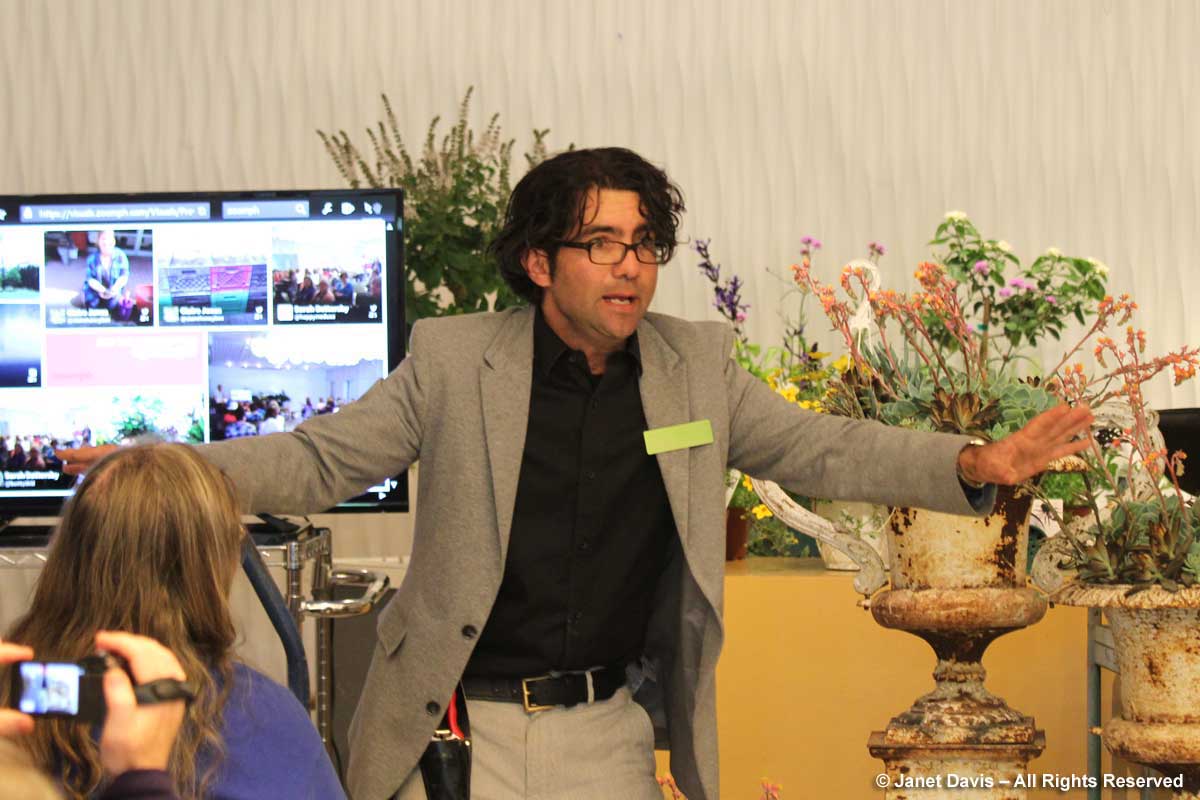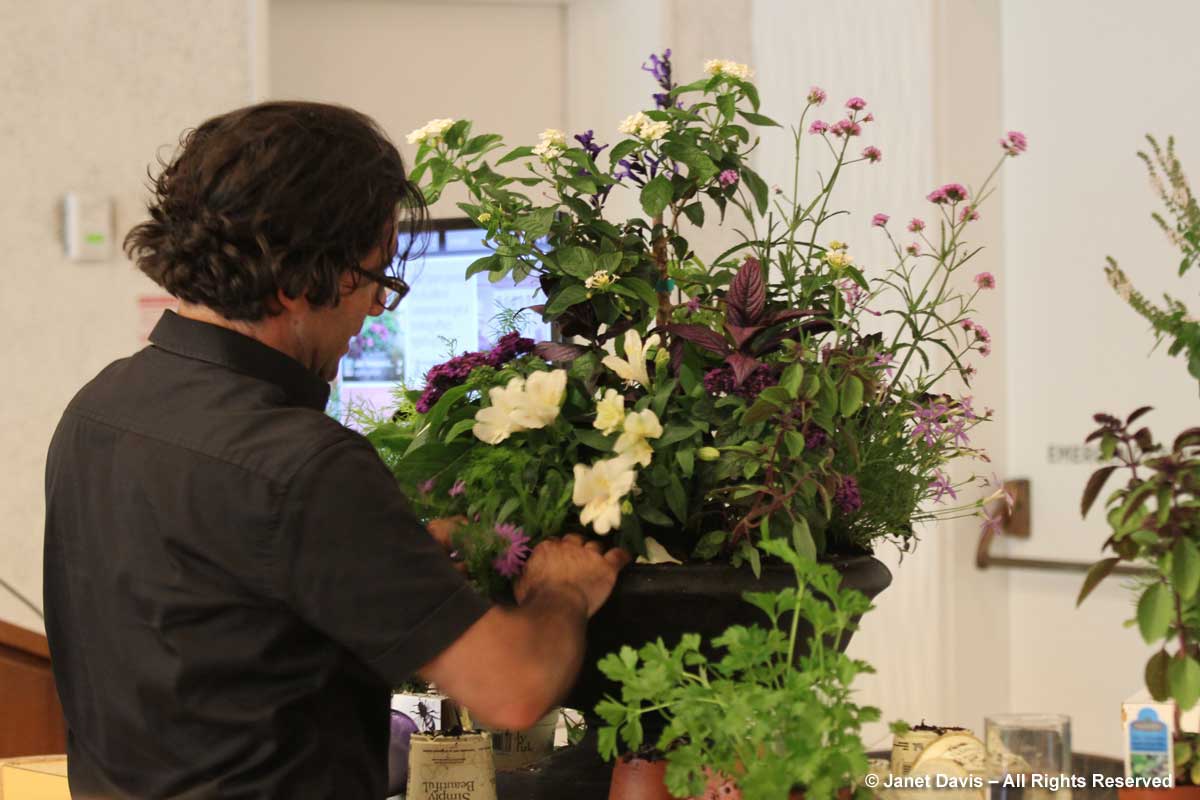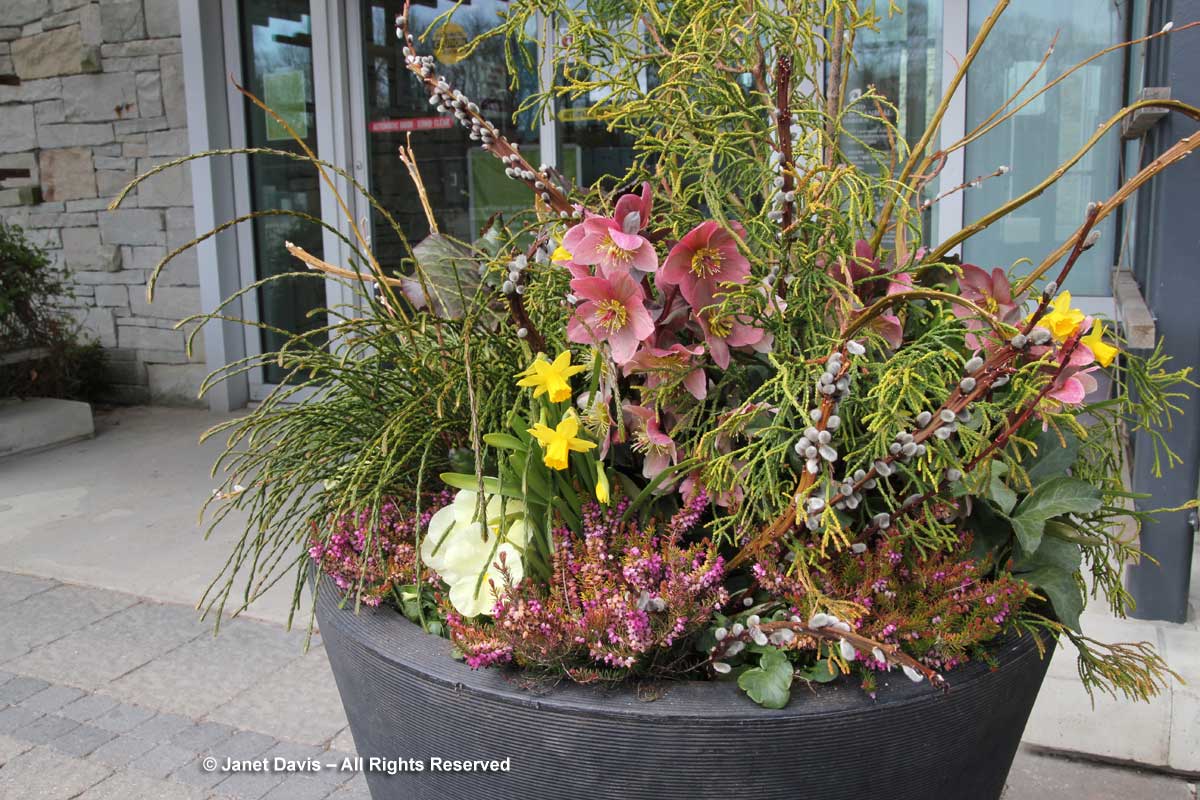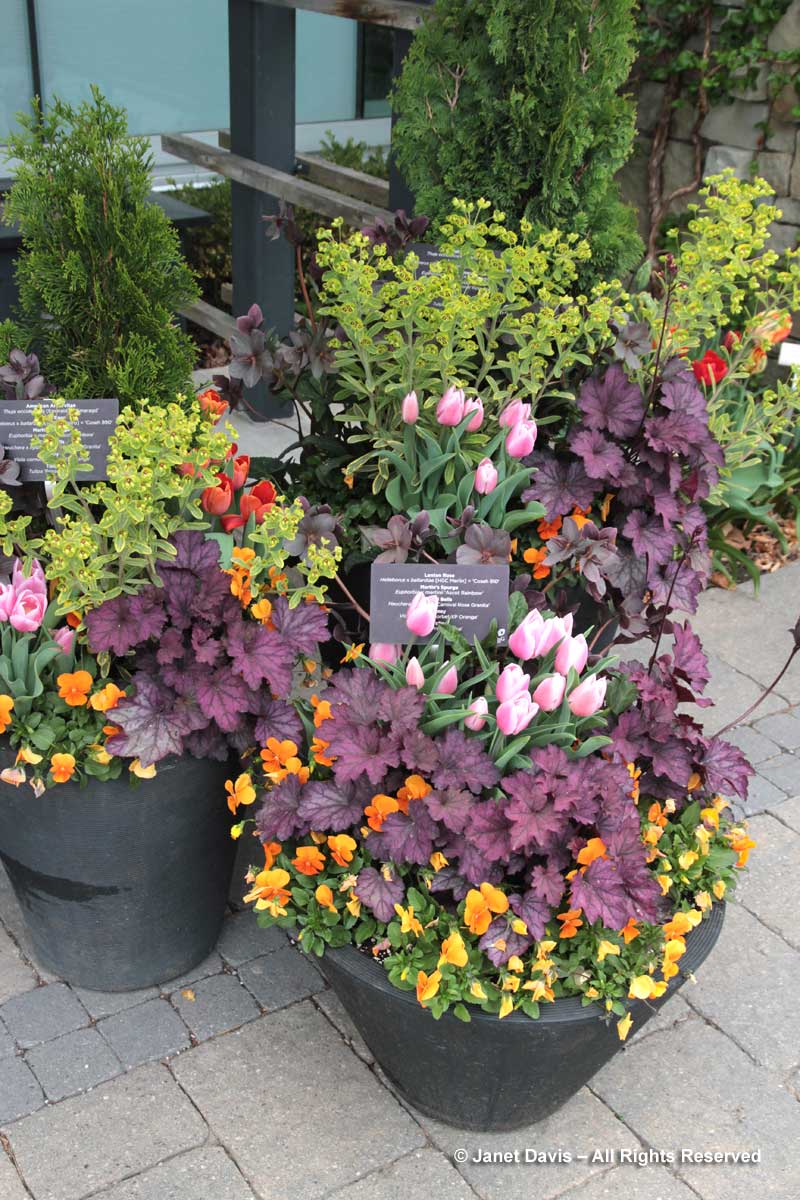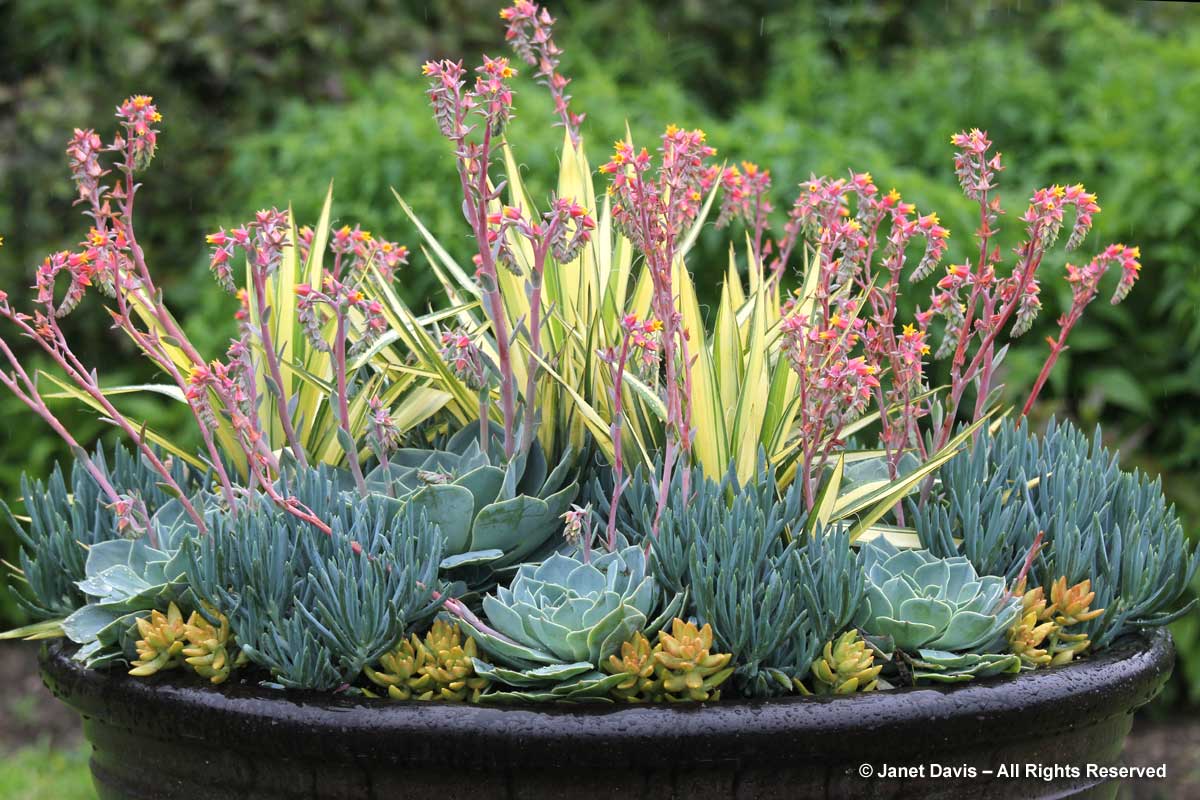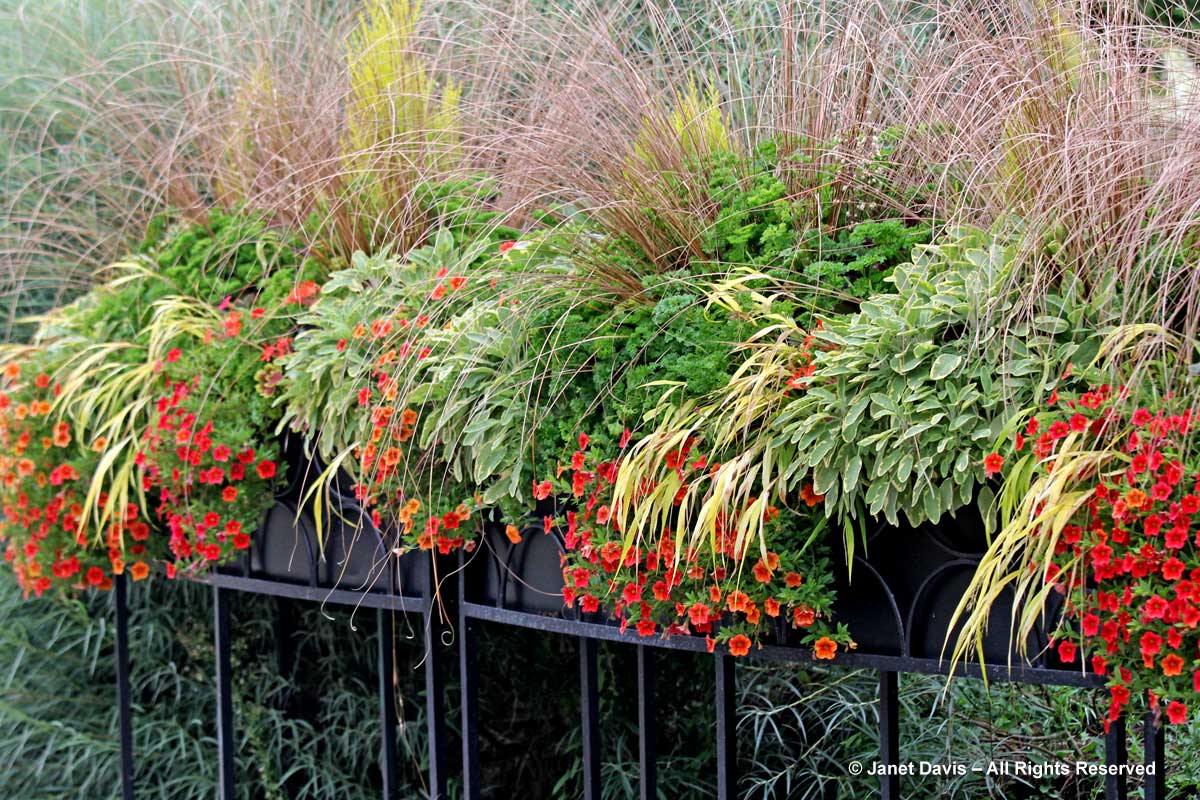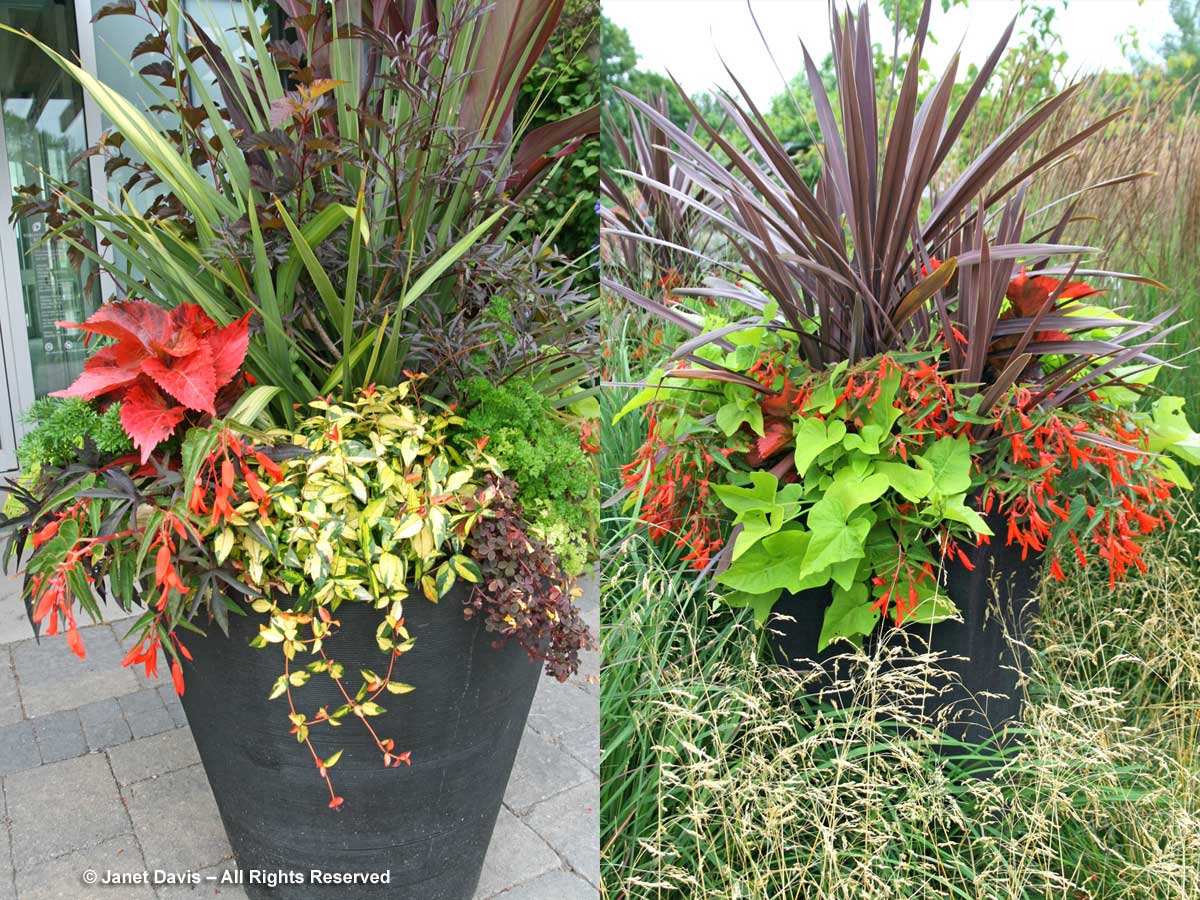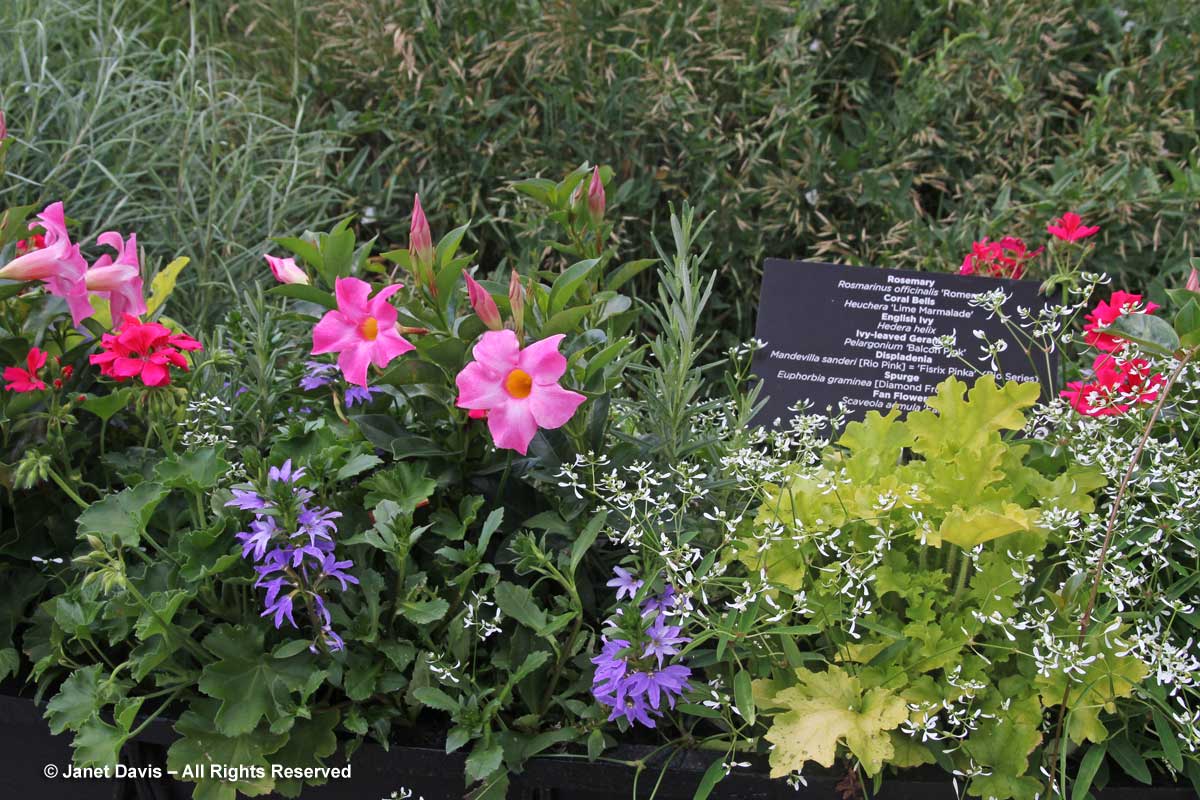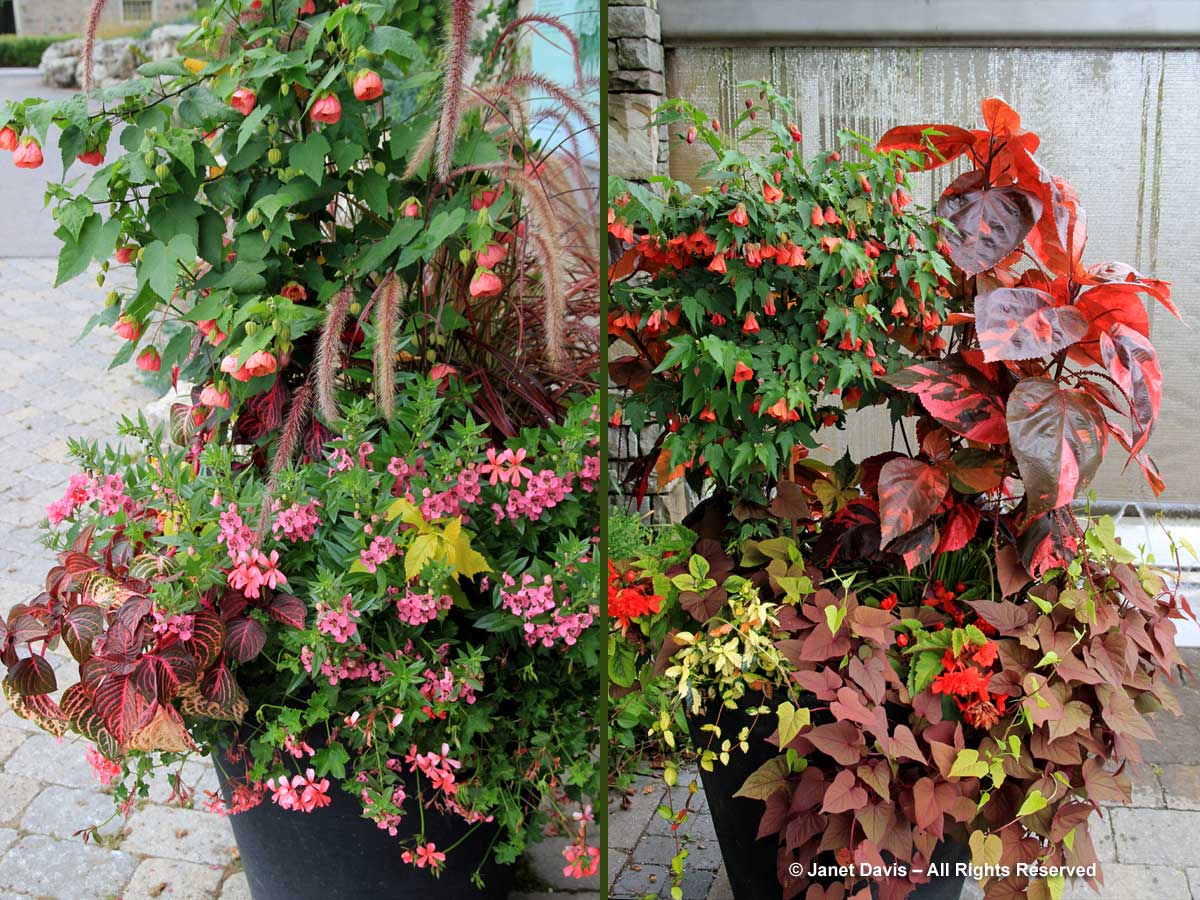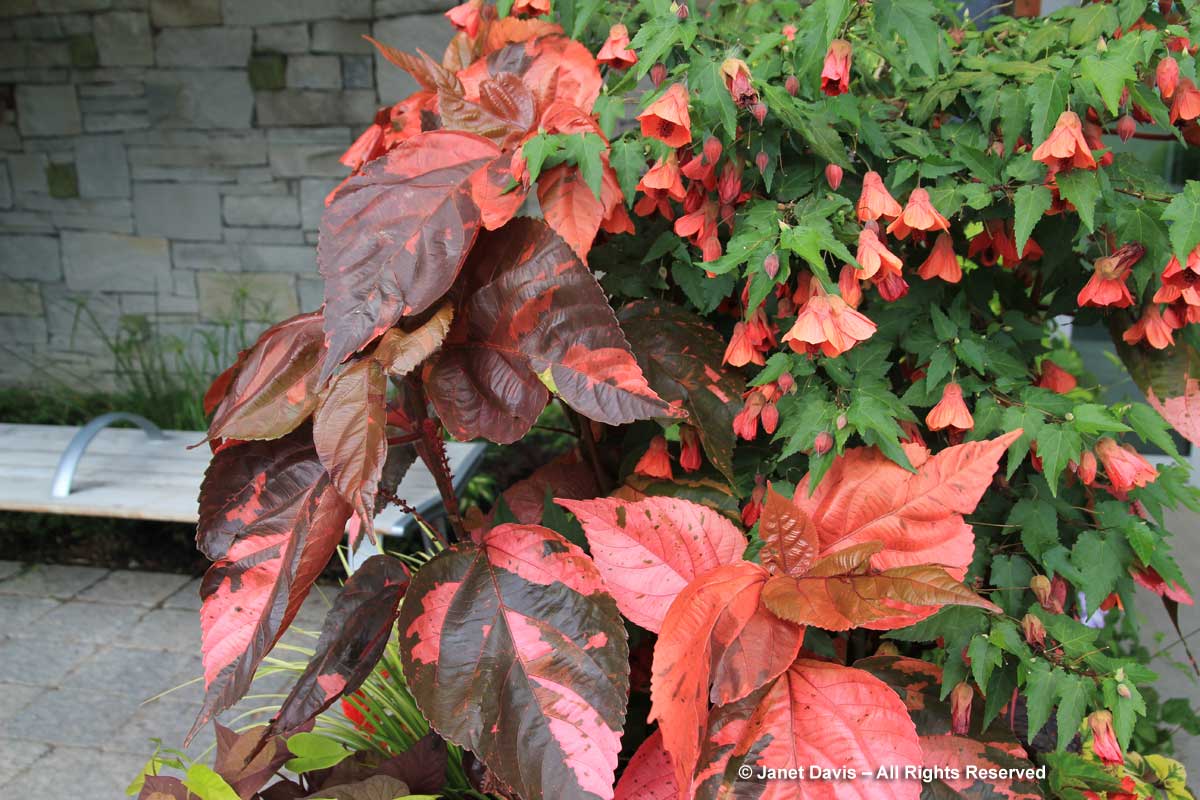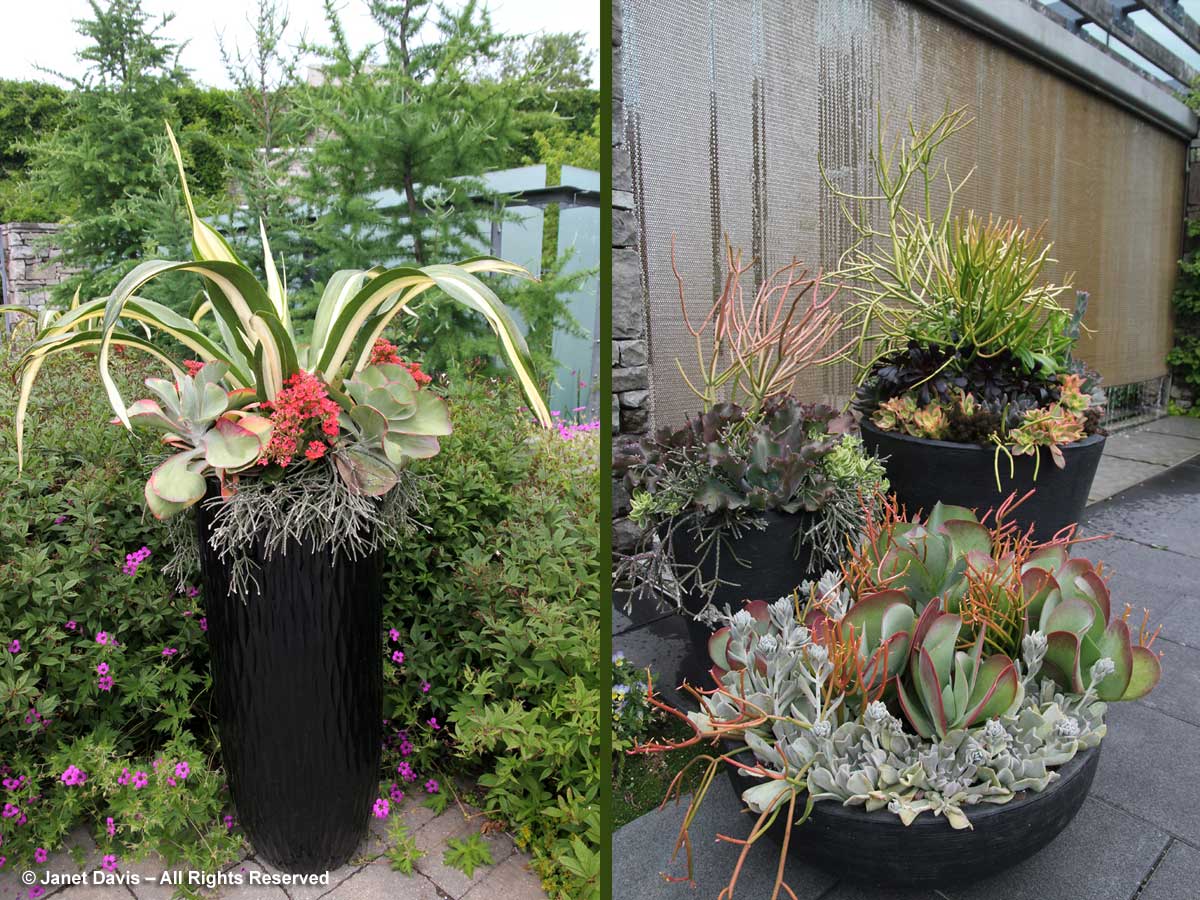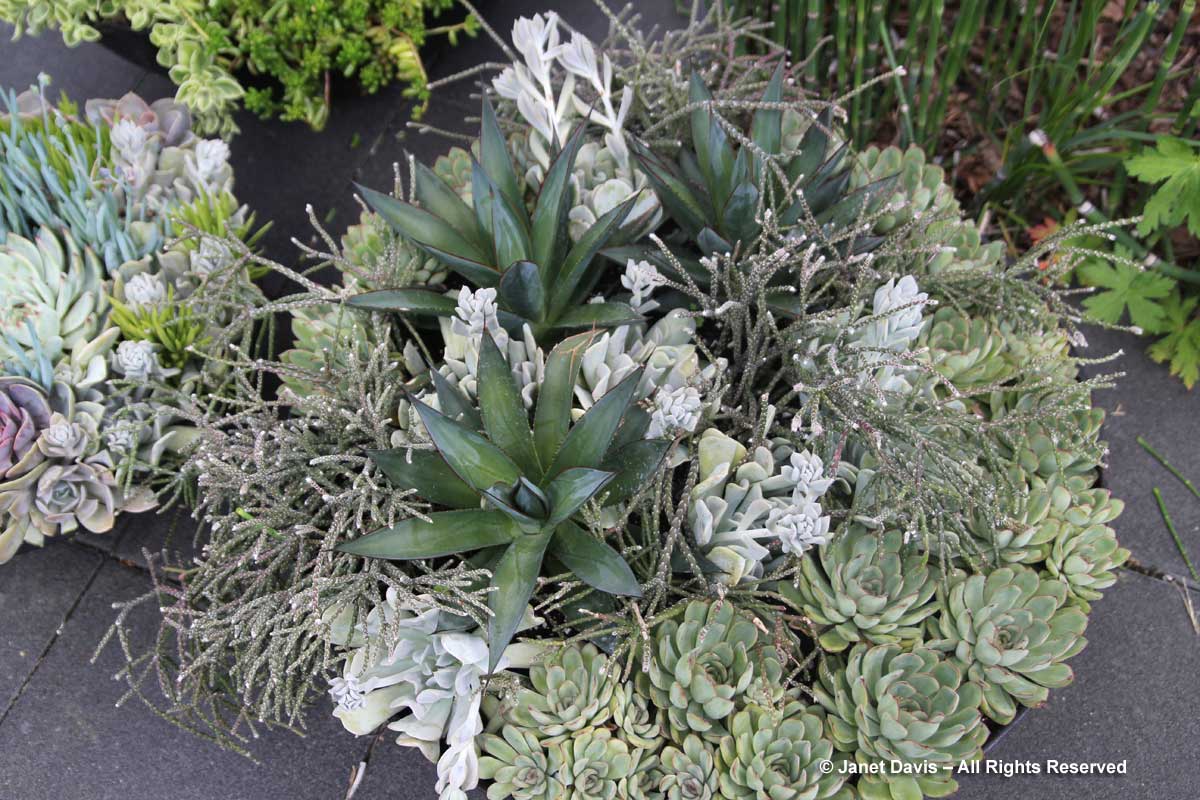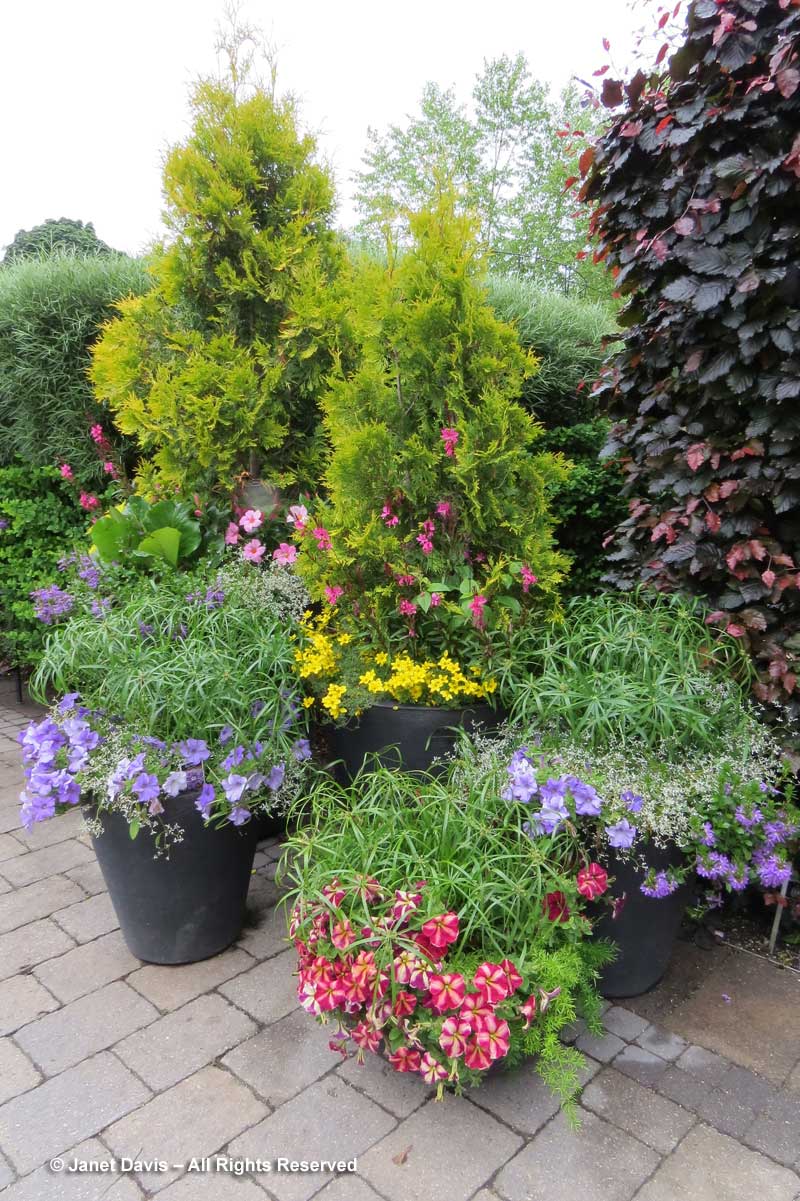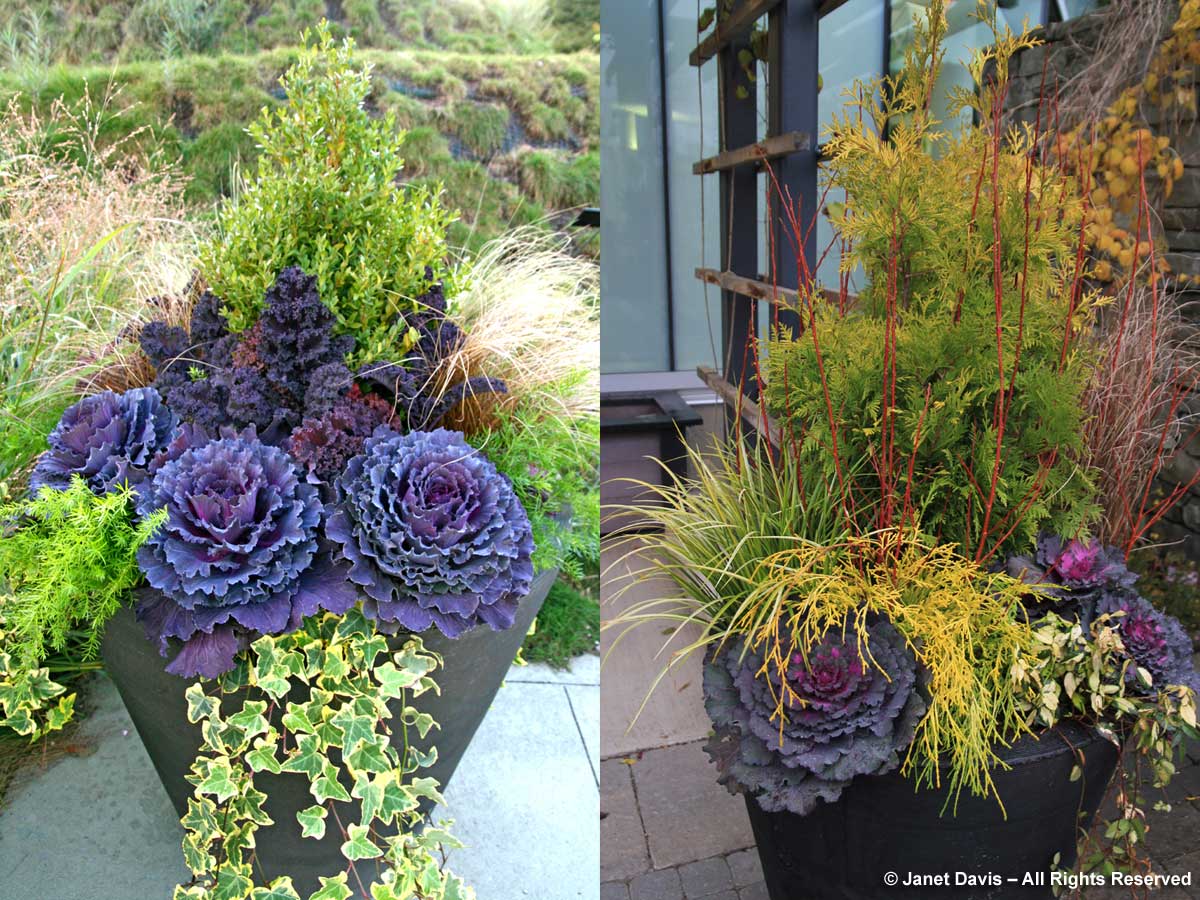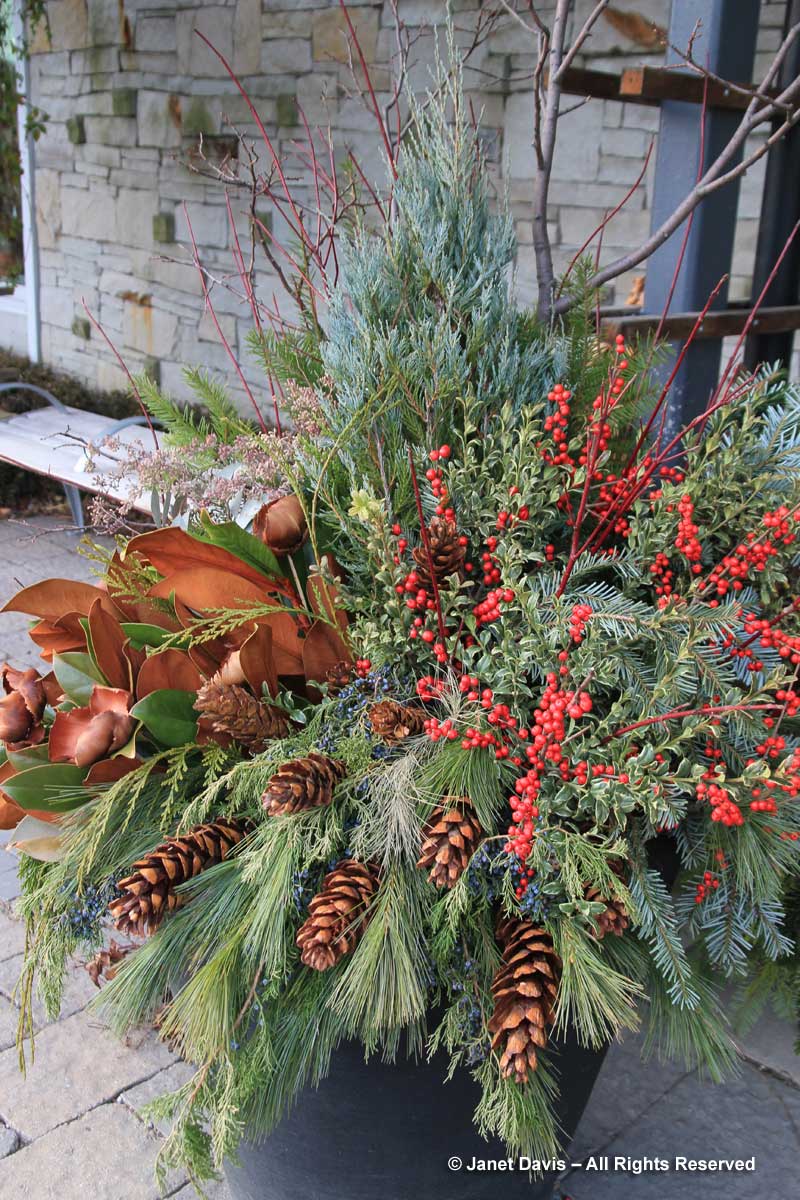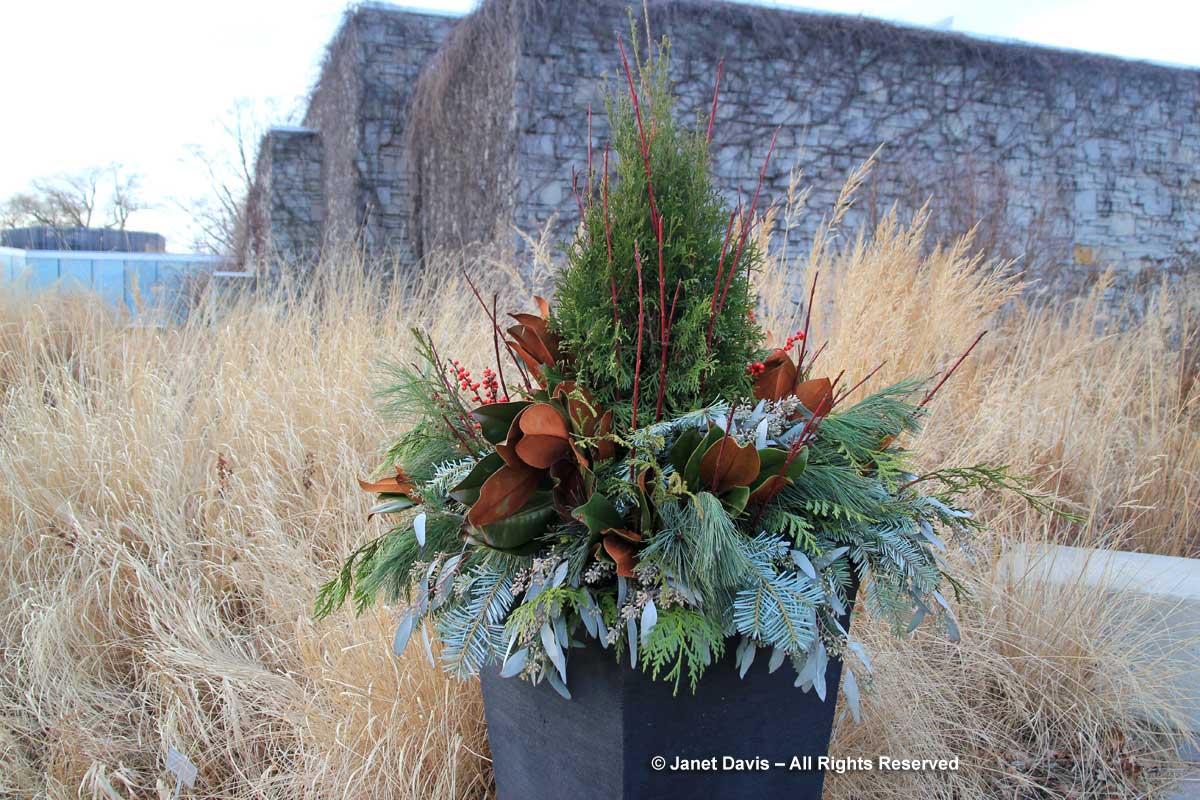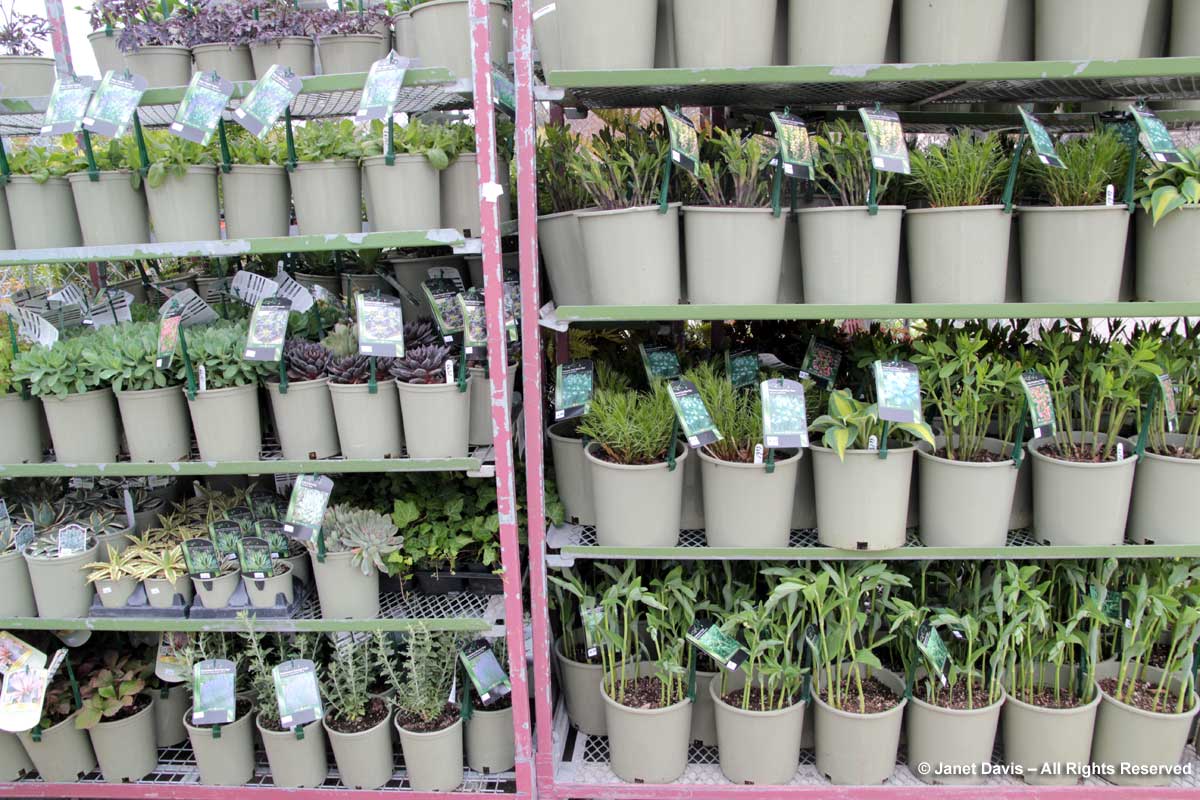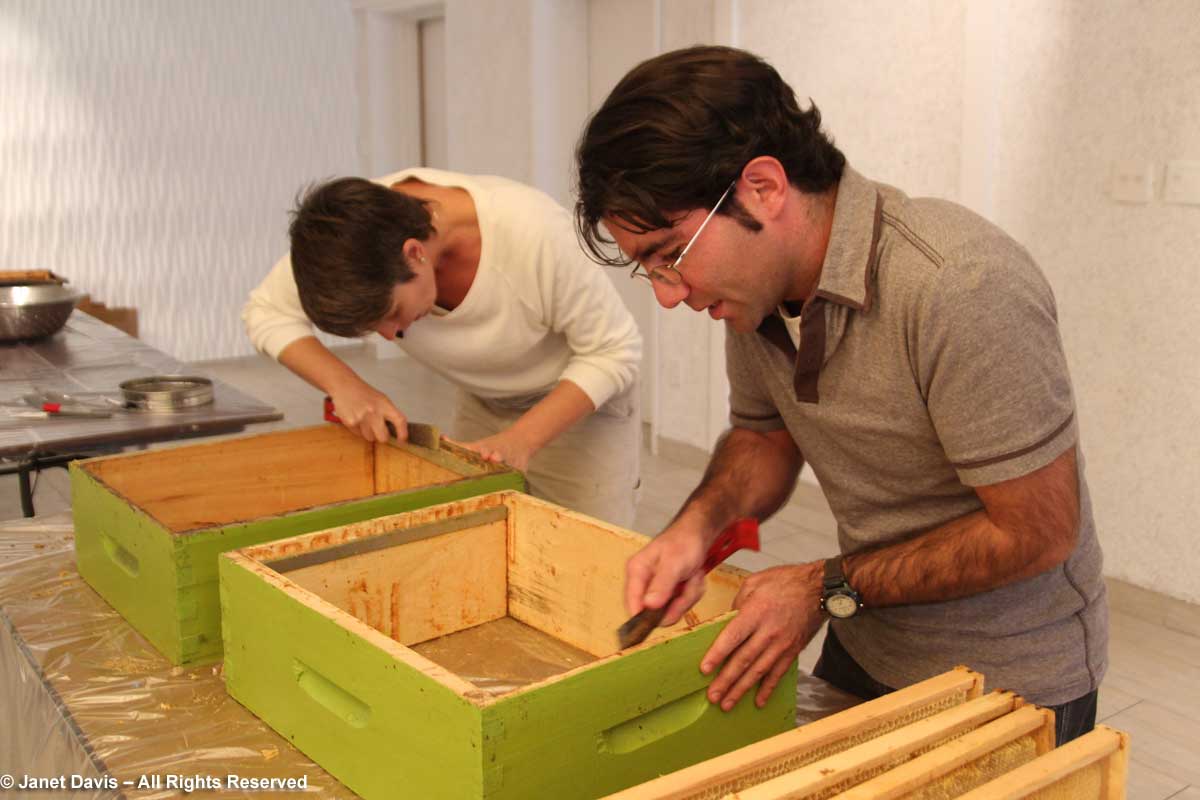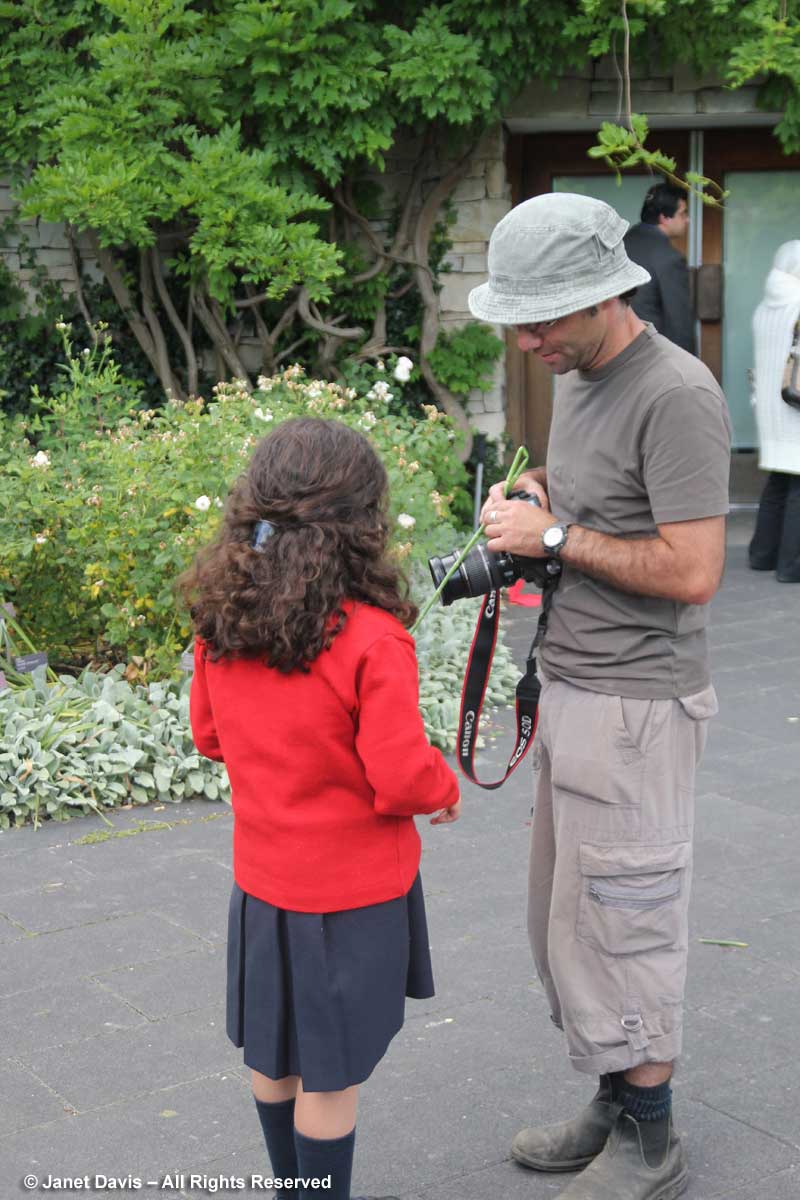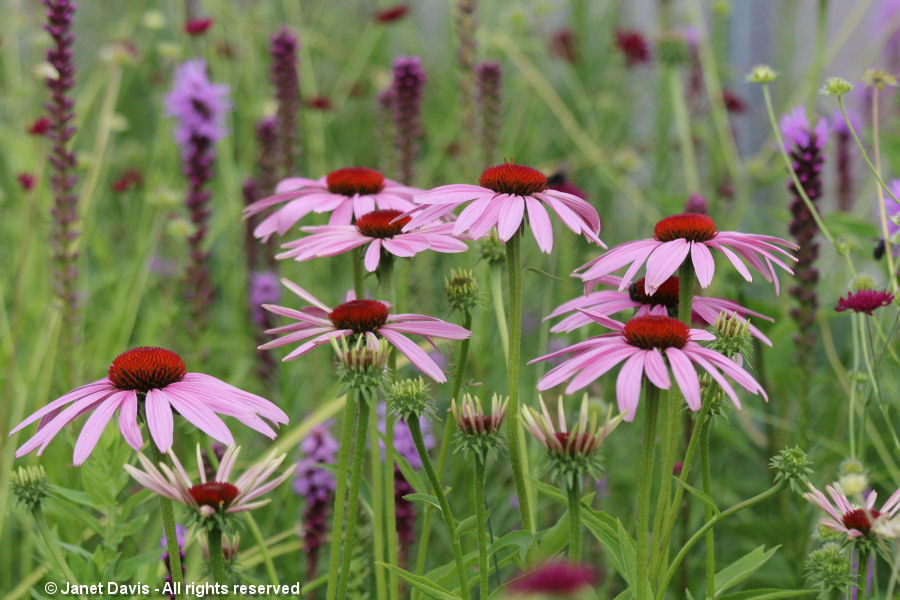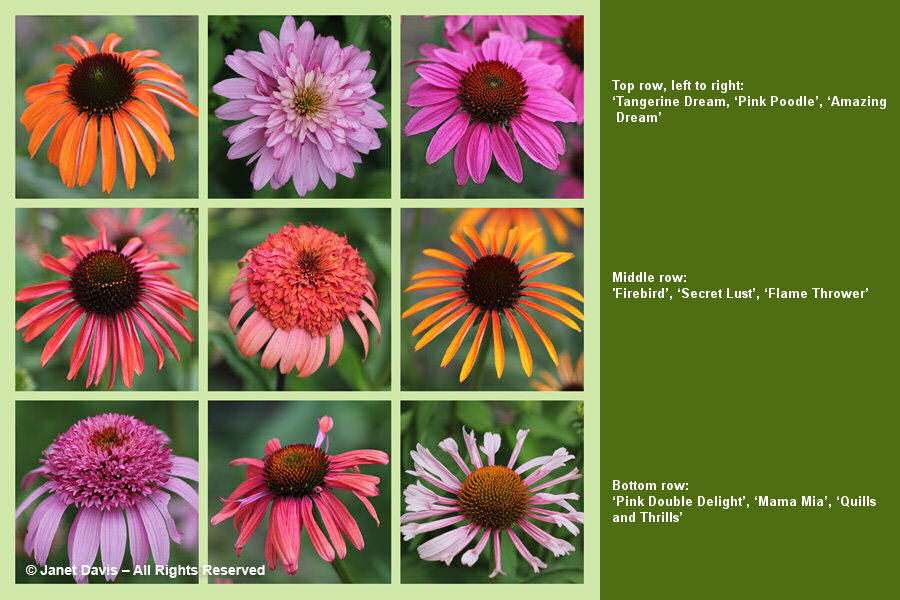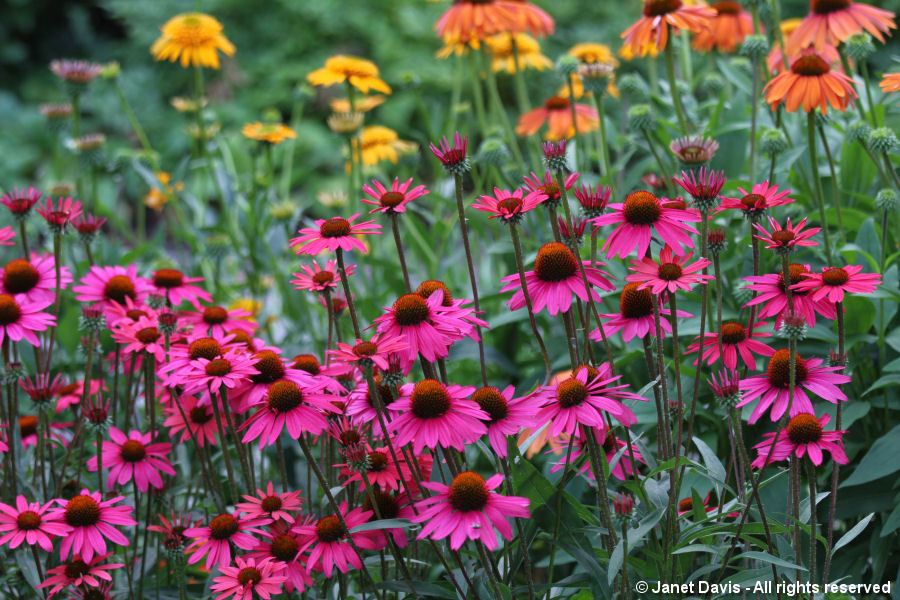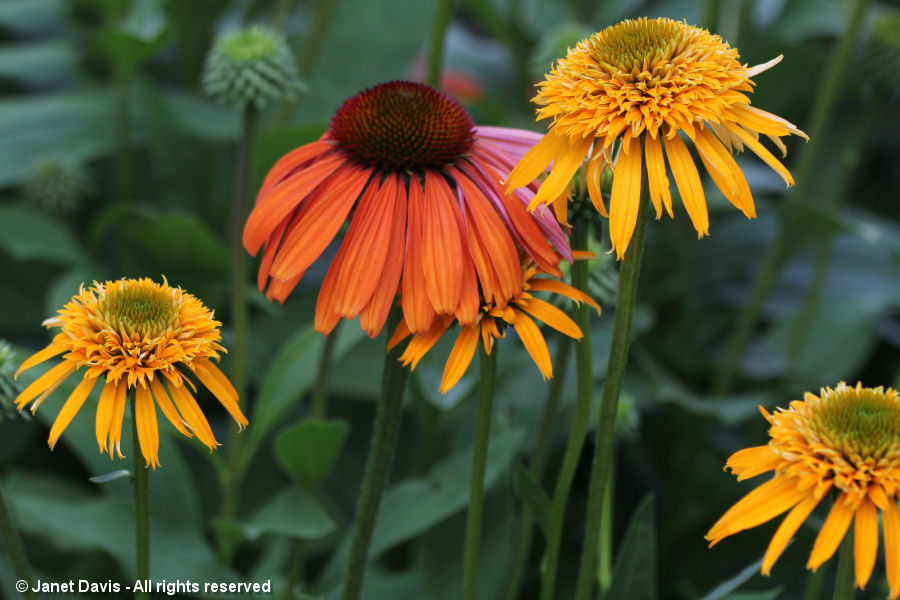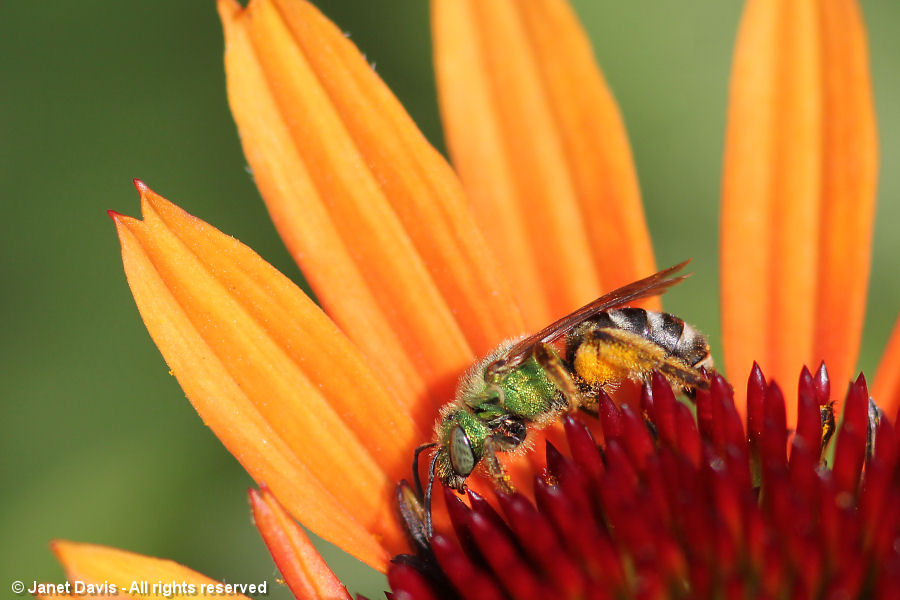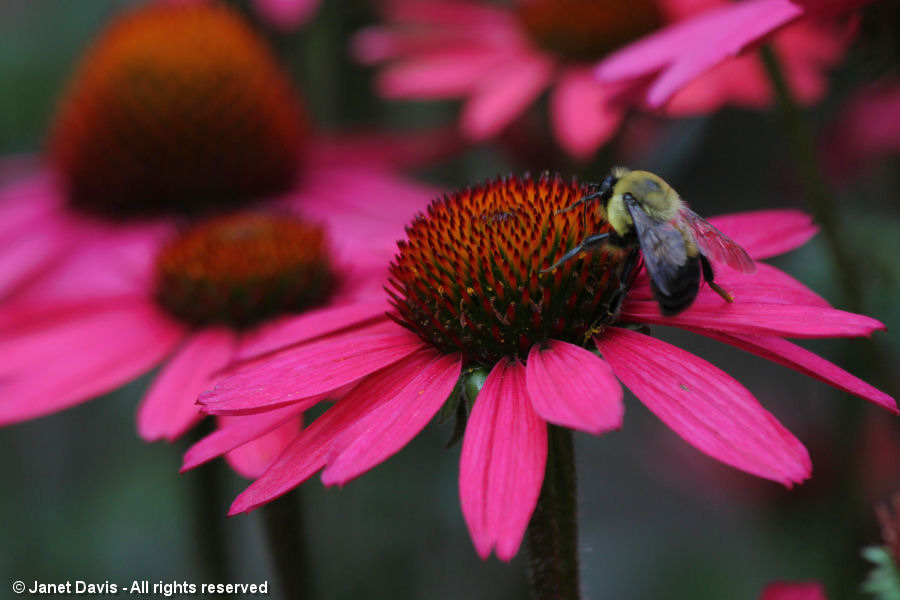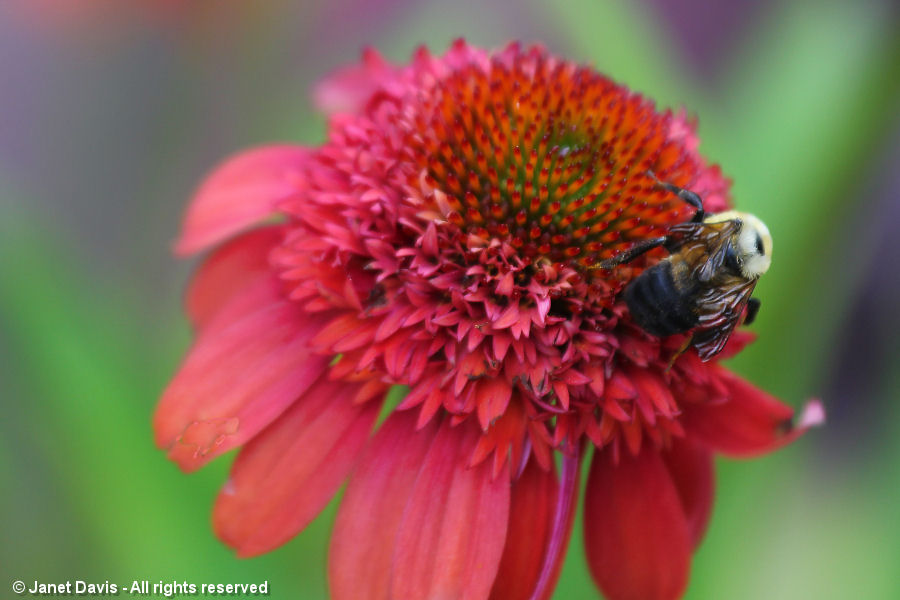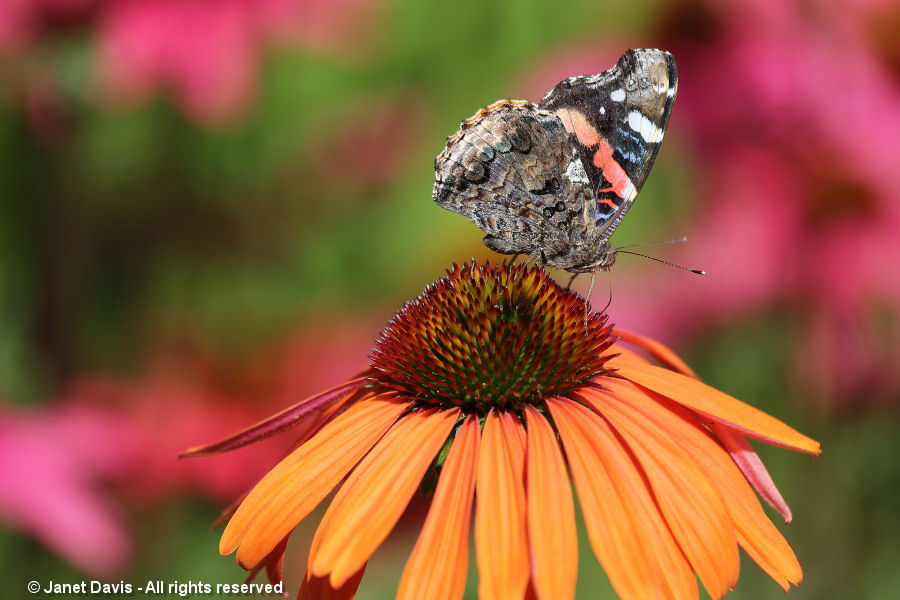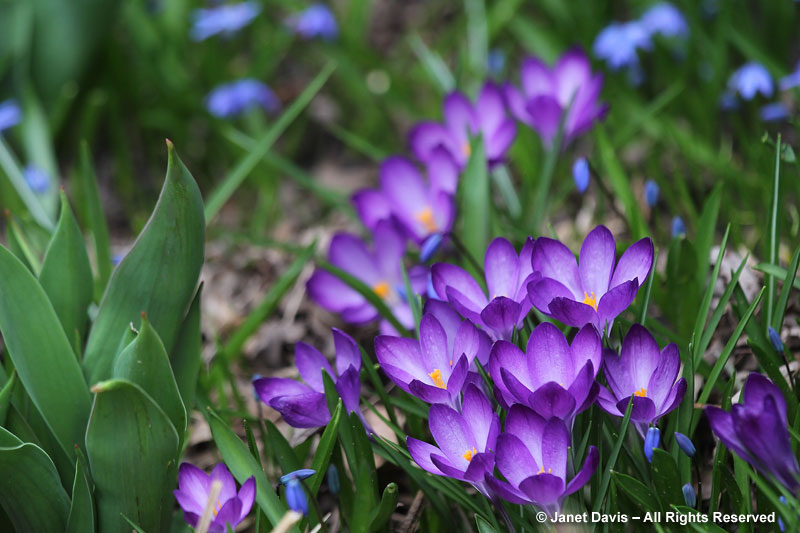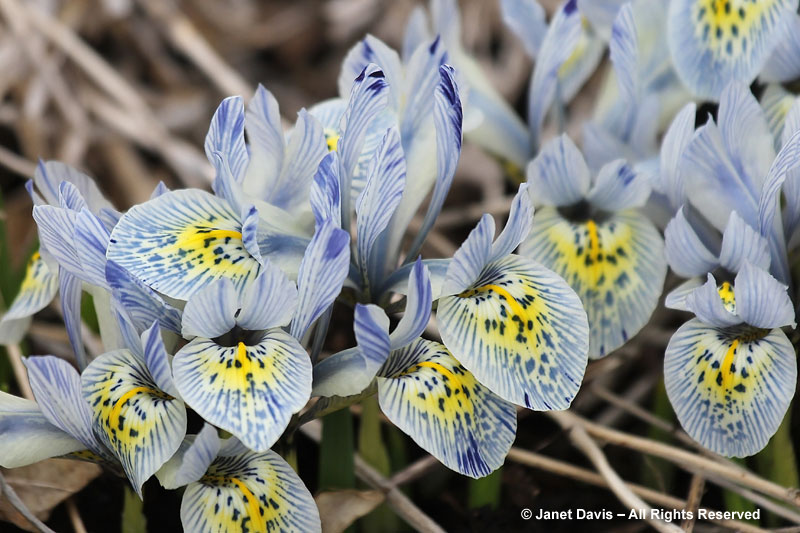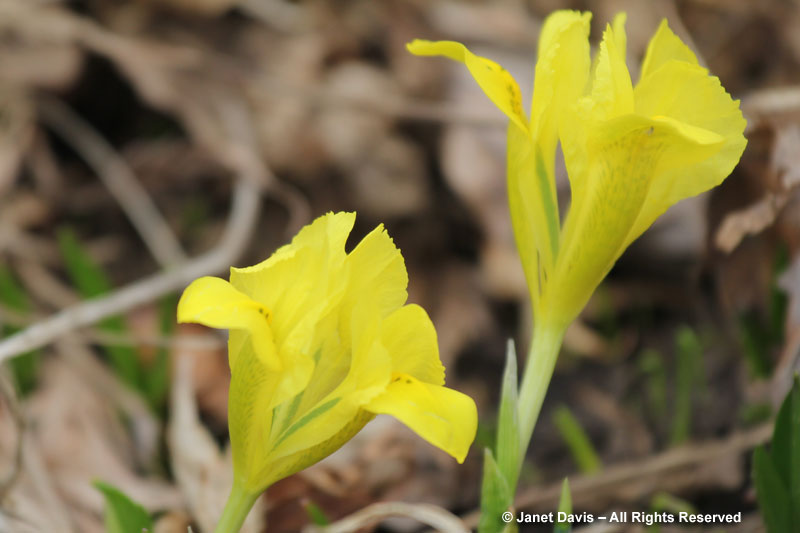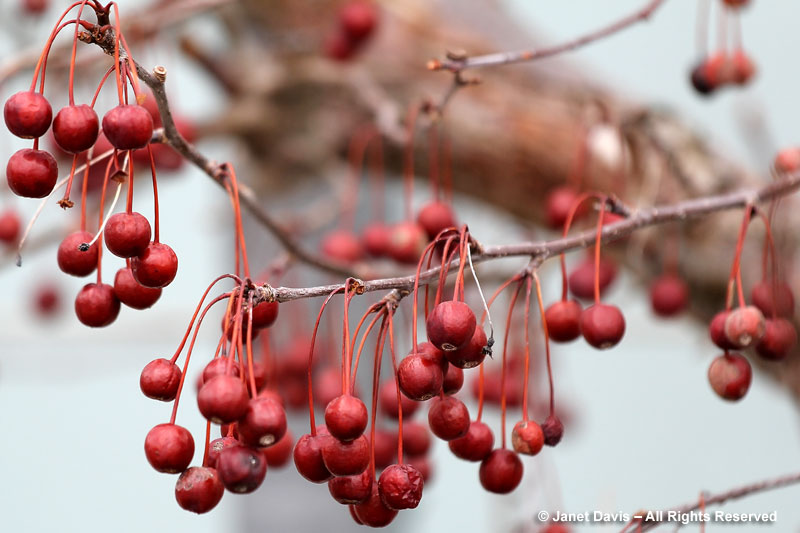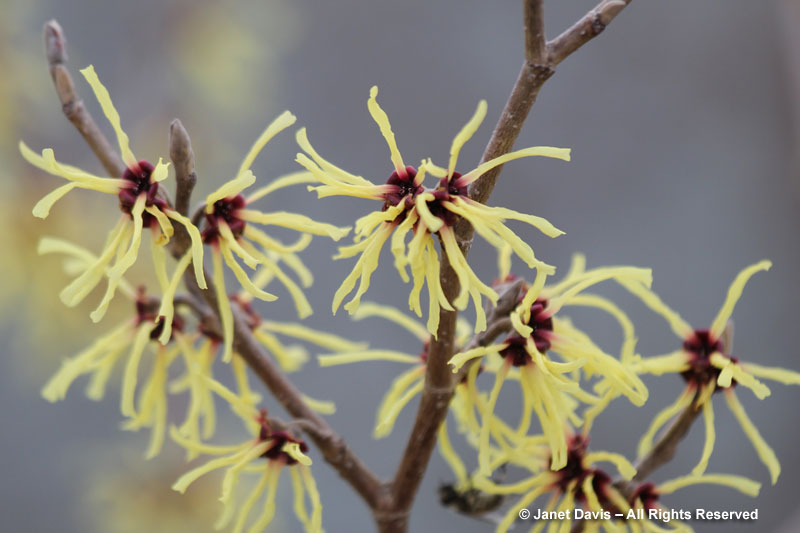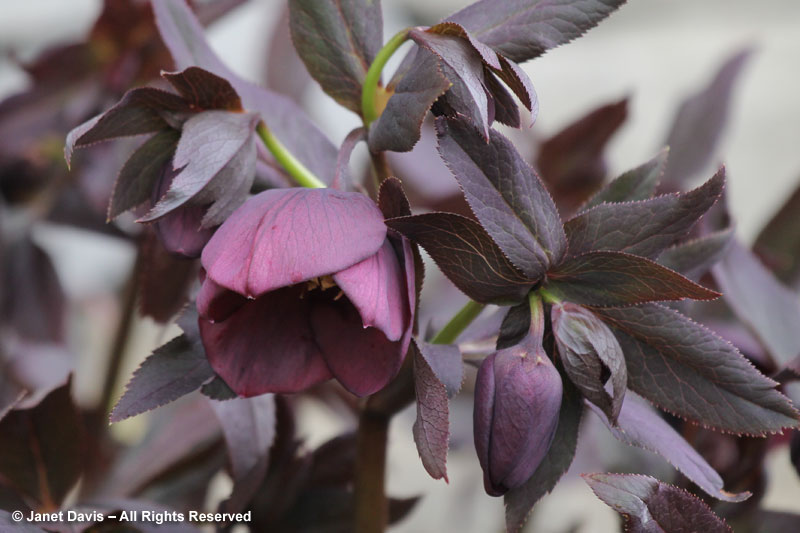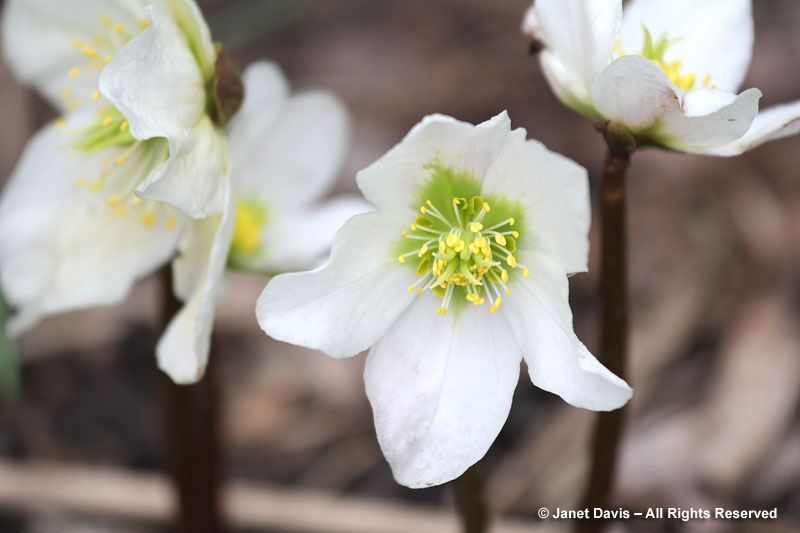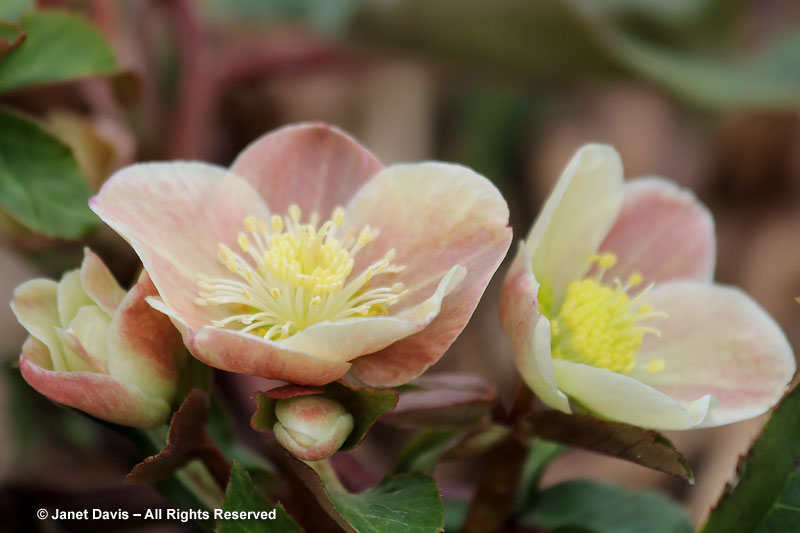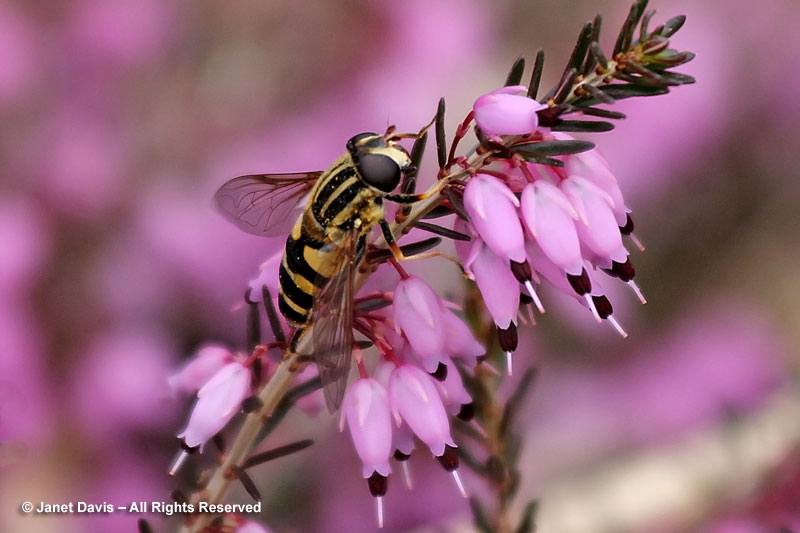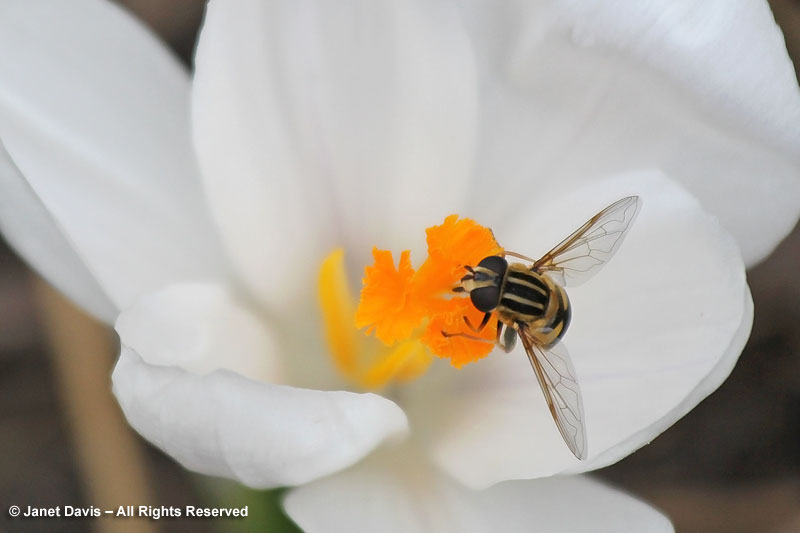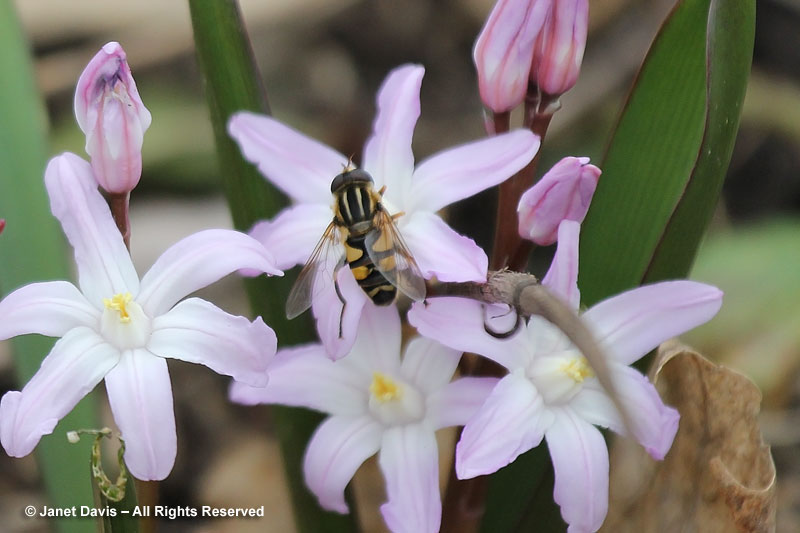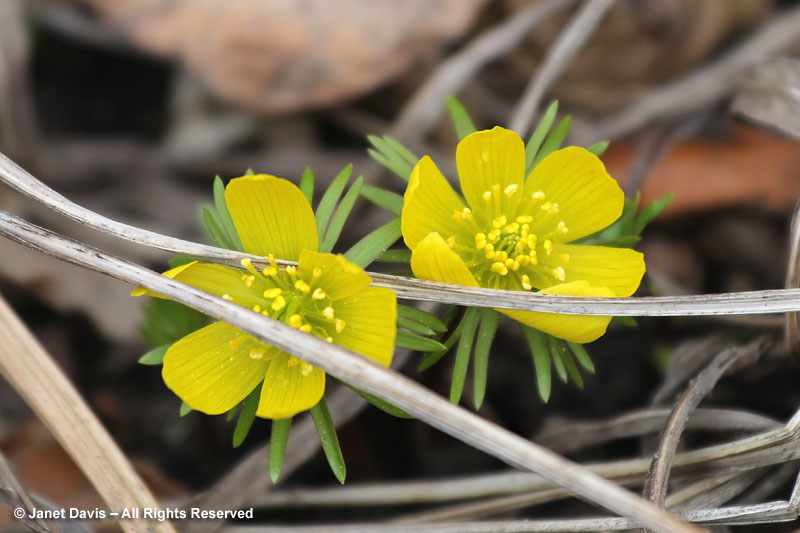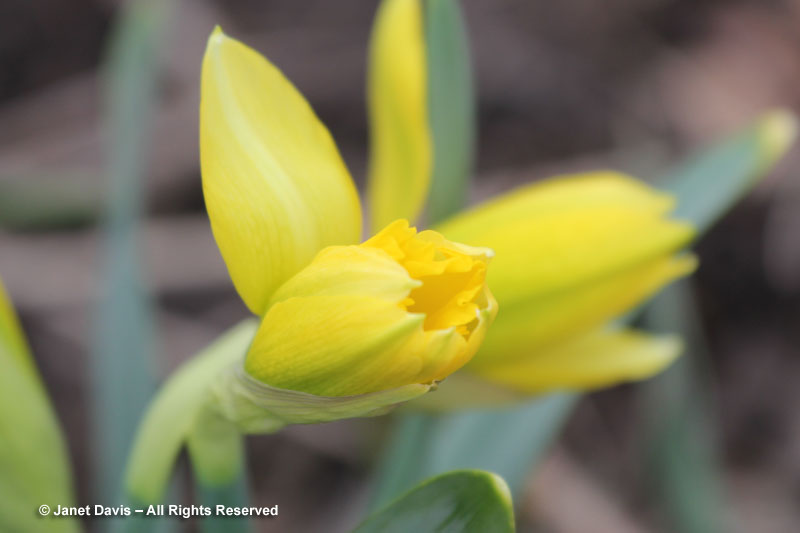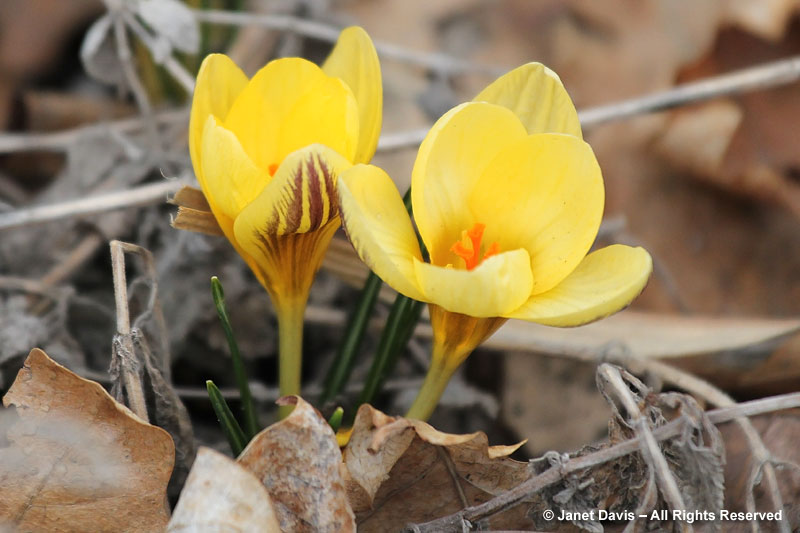“Contain your enthusiasm!” That was a sure-fire title much-loved and overused by the page editors at the big Toronto newspaper I worked for in the 1990s. Whether I was writing about pots of culinary herbs or billowing hanging baskets (yes, we hung wire baskets back in the day, sometimes laboriously lined with damp sphagnum moss), readers were encouraged to pot up all their joy and fervour along with their plants. But listening to Paul Zammit expound on the virtues and vices of container design in front of a group of 65 rapt garden bloggers at the Toronto Botanical Garden this month, I realized that this human bundle of energy and creativity really does add a big dash of enthusiasm to each container he designs. (Not to mention quite a few decades worth of intimate knowledge of how plants behave in confinement!)
But unlike his high-octane performance in front of the bloggers (a horticultural hybrid of pace-the-aisles missionary and polished inspirational speaker)….
…most of the time, no one is around to watch Paul craft his beautiful pots and planters, like this pretty confection from Spring 2011 with its pussy willows, hellebores, euphorbia and ivy…
…or this one, from Spring 2012, using winter heath (Erica carnea) with hellebores, daffodils & little wisps of Chamaecyparis….
…or this cheerful Spring 2015 edition with its purple heuchera, orange violas, euphorbia and pink tulips.
No, Paul’s creations simply appear one day in the garden: a perfect vignette in a big old urn like this, with variegated yucca, echeveria, blue senecio and sedum (2013)…..
….or sleekly-modern, dramatic, black planters (my all-time champions from 2011) filled with ‘Red Star’ cordyline (a Paul favourite), bronze sweet potato vine, fancy-leaf ‘Indian Dunes’ pelargoniums and tropical copperleaf (Acalypha wilkesiana) on top….
…or a row of iron window boxes (2012) stuffed with herbs (sage and parsley), orange calibrachoa, conical golden cypress shrubs, Japanese hakone grass (Hakonechloa macra ‘Aureola’) and bronze carex, which then do their beautiful thing for months on end.
My camera and I have been watching Paul’s containers for the better part of 10 years, and I’ve collected quite a few favourites. As noted above, he loves cordylines! And mixing orange with green, like these textural designs from 2009….
…but will occasionally opt for romantic, old-fashioned colours like pink and purple (2012) – and always with a plant list label.
Who else could work such magic with wine, chartreuse and orange: crotons, lantana, ‘Crimson Curls’ heuchera, yellow bidens, ‘Burgundy’ oxalis and orange Sparks Will Fly Begonia boliviensis, (2014)
He’s fond of statuesque, tropical plants for summer-long colour, but ,,,,,
…it takes a practised eye to know how fabulous peach abutilon and brown-and-peach copperleaf (Acalphya wilkesiana) will look together…
He loves using the dramatic foliage of canna lilies, as in the two towering designs below from 2013 and 2009. Foliage always trumps flowers for Paul, as with the euphorbia and arborvitae, left, and the cut-leaf golden elder, right. If you look closely, you might see a few of Paul’s favourite fillers, parsley and asparagus fern.
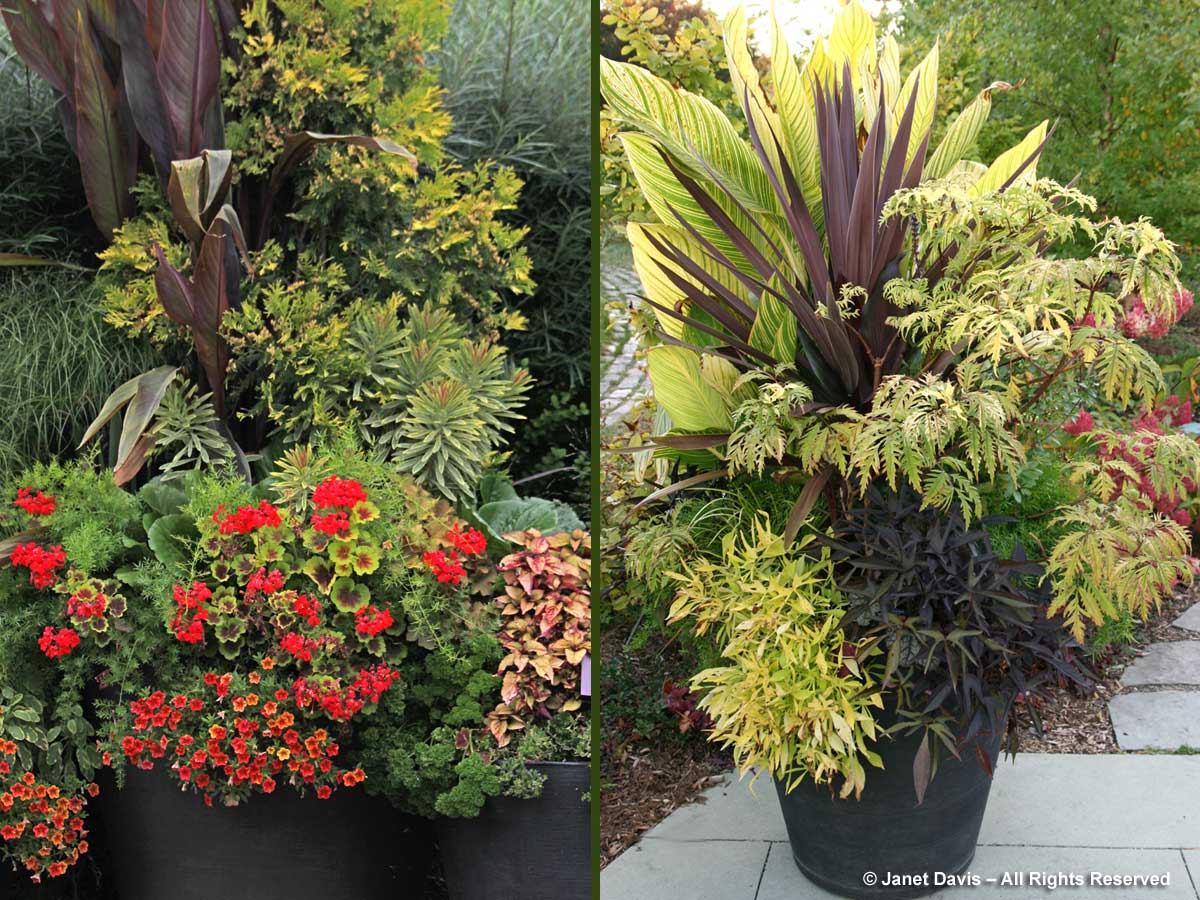
Not everyone would consider using false spirea (Sorbaria sorbiifolia ‘Sem’) to anchor a design, this time with ‘Firecracker’ fuchsias and orange bromeliads and ivy.
Did I mention that Paul loves succulents? And he knows just which species to use together to create texture and fullness, from variegated Furcraea foetida to rosy-edged paddle plant (Kalanchoe thyrsiflora), in these designs from 2012.
I loved these shallow bowls filled with shimmery silvery-gray succulents (2012).
Visitors to the Toronto Botanical Garden’s front entance are always treated to a multi-container array.The one below, from 2014, featured silvery salvias, pink dipladenias, red celosia, trailing chenille plant (Acalypha pendula), ferns and swishing papyrus – perfect with the water wall as backdrop.
He understands how important height is in a prominent container display, using lime-green arborvitae to anchor these pots (2014) and also serve as a deterrent to any young Spiral Garden climbers wishing to take a shortcut back down the slope.
Somehow, his ornamental kale manages to look more sensuously dramatic than anything I plant for autumn, like these from 2009 and 2011.
Each December, Paul dresses up the TBG for the holiday season using abundant berried branches and colourful conifers, like the pots below from 2011.
I especially loved this planter standing sentry in front of the tawny winter grasses in Piet Oudolf-designed entry border.
But apart from creating his container designs, being the spokesperson for the TBG on radio gardening shows and the lecture circuit and overseeing the TBG’s annual plant sale……
Paul is also on hand for events like the annual honey harvest from the garden’s beehives. Here is scraping the frames clean with TBG staffer (and beekeeper) Liz Hood.
And when he has the chance, he’ll take time to do one-on-one education with the garden’s younger visitors, like this little girl learning about horsetails (Equisetum hyemale).
Finally, a little personal note. When my daughter was married at the TBG in 2012 – a busy day with loads of traffic and hundreds of people in and out of the building — one of the bridesmaid’s bouquets somehow went missing in the chaos. Understandably a little frantic with less than an hour before the ceremony, I told Paul about our problem. He had a quick look at the other bouquets, said “Give me half an hour”, and off he went into the gardens. Little did I know when he presented the bouquet (“I’ve done some hand-tying in my time”, he said with a chuckle), that he’d also raced in his car to a nearby florist and picked up appropriate fillers to go with the (slightly redder) dahlia he’d plucked from the test garden. The bride was none the wiser as the girls posed for photos, the day was saved and Paul shrugged off my effusive thanks in his typically modest way.
So from me, and all the people who enjoy your lovely designs throughout the year, thanks, Paull Zammit! And never stop containing your enthusiasm!

